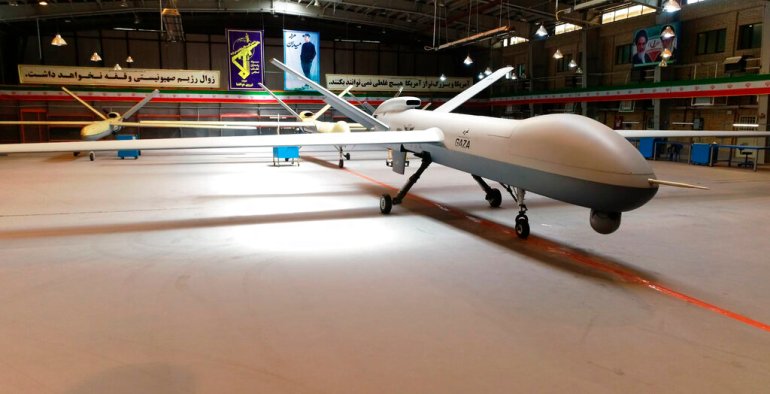Officials: Iran behind drone attack on US base in Syria
Pro-Iran outlets say drone attack on Americans, Syrian allies at al-Tanf was in response for Israeli strike on Palmyra.

United States officials believe Iran was behind a drone attack last week at a military outpost at al-Tanf in southern Syria where American troops are based.
Officials said Monday the US believes that Iran provided resources and encouraged the attack, but that the drones were not launched from Iran, The Associated Press news service reported.
Keep reading
list of 4 itemsIran to host multilateral conference on Afghanistan
Syria, Iran on agenda as Putin hosts Israel’s new PM in Russia
Iran launches large-scale air defence military drill
The drones were Iranian, and Iran appears to have facilitated their use, officials said, speaking on condition of anonymity to discuss details that have not been made public.
Officials said they believe the attacks involved as many as five drones laden with explosive charges, and that they hit both the US side of al-Tanf garrison and the side where Syrian opposition forces reside.
There were no reported injuries or deaths as a result of the attack but it comes in a period of rising tensions between the US and Iran. The Biden administration this week said international diplomatic efforts to get Iran back into a 2015 nuclear deal were at a “critical place” and that US patience was wearing thin.
US and coalition troops are based at al-Tanf to train Syrian forces on patrols to counter Islamic State militants. The base is located on a road that serves as a vital link for Iranian-backed forces from Tehran to southern Lebanon and Israel.

Pentagon spokesman John Kirby declined to provide details when asked about the report during a news conference Monday.
Kirby called it a “complex, coordinated and deliberate attack” and said the US has seen similar ones before from Shia militia groups that are backed by Iran. But he would not go into specifics and said he had no update on the munitions used in the attack.
Kirby also declined to say if troops were warned ahead of time, or whether the US intends to make a military response.
“The protection and security of our troops overseas remain a paramount concern for the secretary,” Kirby said.
If there is to be a response, it will be at a time and a place and a manner of our choosing, and we certainly won’t get ahead of those kinds of decisions,” Kirby said.
Pro-Iran media outlets have been saying that the attack on al-Tanf was carried out by “Syria’s allies” – an apparent reference to Iran-backed groups – in retaliation for an Israeli strike days earlier near the ancient historic Syrian town of Palmyra. Israel has been blamed for the attack, but US officials say the US military was not involved.
The US provides $3.5bn a year in support of Israel’s military. The Israeli airstrike near Palmyra killed one Syrian soldier and three pro-Iranian fighters, according to a UK-based war monitor.
“You can consider that the strike on al-Tanf was an implementation” of previous promises by Syrian allies to retaliate for Palmyra, according to an official with the so-called Axis of Resistance, an anti-Western political-military alliance that includes Iran, Syria, Hezbollah and other groups fighting alongside Syrian President Bashar Assad’s forces.
The last major Iranian attack on US forces was in January 2020, when Tehran launched a barrage of ballistic missiles on al-Asad air base in Iraq.
US and coalition troops were warned of the incoming missiles and were able to take cover, but more than 100 US service members received traumatic brain injuries as a result of the blasts.
The Iran attack was in response to the US drone strike earlier that month near the Baghdad airport that killed Iranian General Qassem Soleimani and Iraqi militia leader Abu Mahdi al-Muhandis.
Two months after the al-Asad assault, US fighter jets struck five sites in retaliation, targeting Iranian-backed Shiite militia members believed responsible for the January rocket attack.